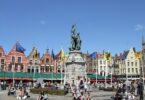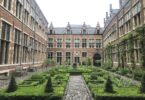Belgium, a country steeped in rich history and cultural diversity, boasts a collection of UNESCO World Heritage Sites that beckon travelers to step back in time and experience the unique tapestry of this European gem. From architectural marvels to serene natural landscapes, these sites offer a glimpse into Belgium’s past and its significant contributions to the world.
Grand Place, Brussels

Located at the heart of Belgium’s capital, the Grand-Place in Brussels is a stunning ensemble of historic buildings that exude opulence and architectural brilliance. Adorned with intricate façades and ornate sculptures, this central square is a showcase of the city’s cultural and economic significance over the centuries.

Historic Centre of Brugge

The Historic Centre of Brugge showcases the city’s medieval history and cultural importance. Brugge, once a thriving commercial hub, reflects the influences that shaped its art and architecture, notably the distinctive brick Gothic style of northern Europe and the Baltic. This architectural style defines the city’s historic core.
The Historic Centre of Brugge includes these tourist attractions;
- Grote Markt (Market square)
- Belfry (Belfort) of Bruges
- Liberty of Bruges (Brugse Vrije)
- Bruges City Hall (Stadhuis)
- Rozenhoedkaai (Quai of the Rosary) – beautiful houses
- St. Salvator’s Cathedral
- Church of our Lady (Onze-Lieve-Vrouwekerk)
- Boniface Bridge – the smallest bridge in Bruges
- Béguinage St Joseph
- Jerusalem’s Church
- St John Hospital
- Church Notre Dame
Taking a canal boat tour is a great way to explorer the city.
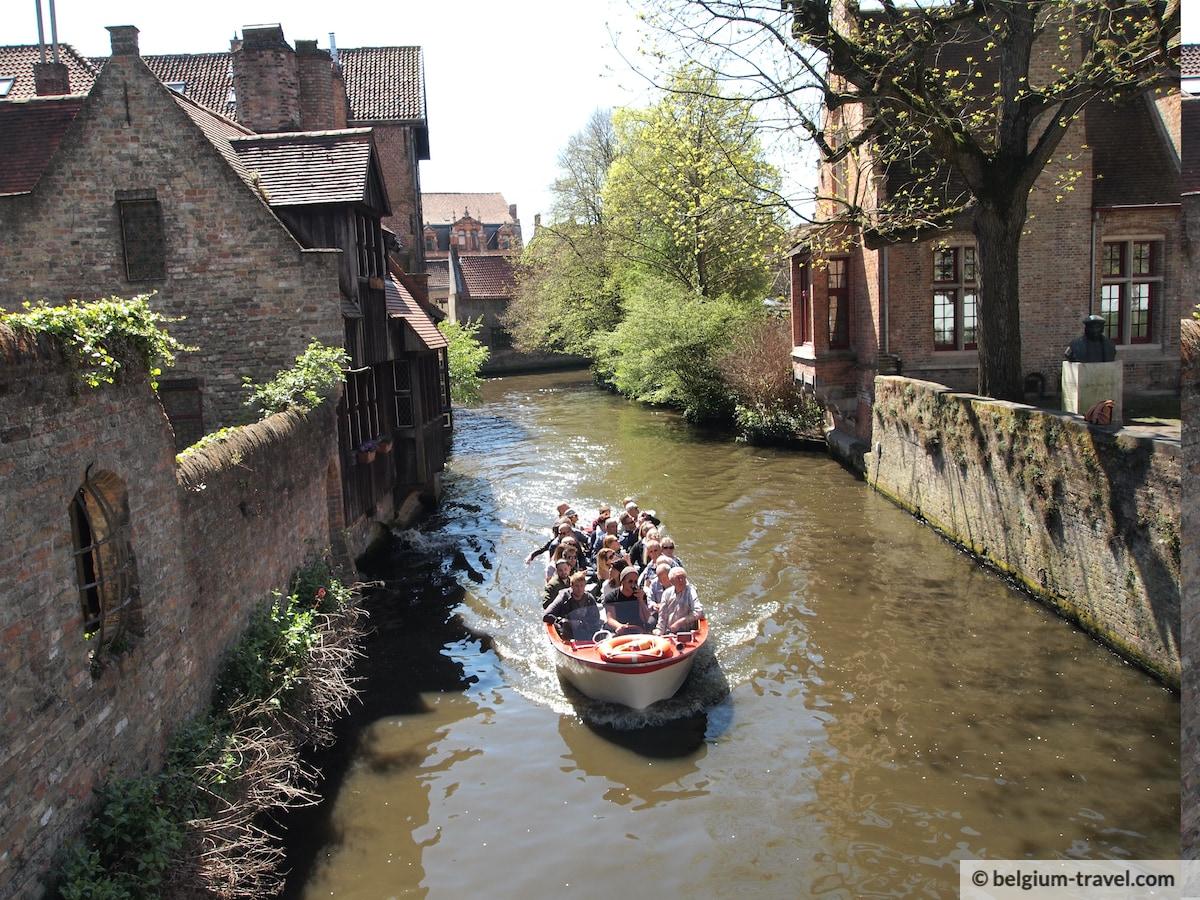
Belfries of Belgium and France (1999, 2005)
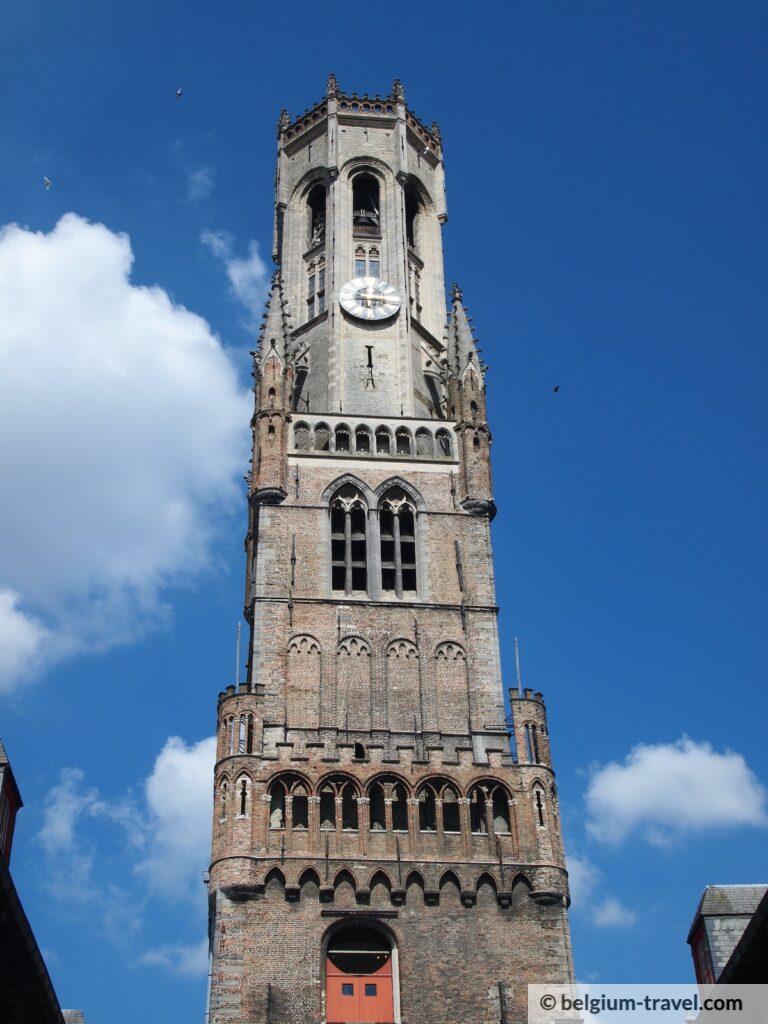
In 2005, an extension to the 1999 inscription of 32 Belgian belfries (26 in Flanders and 7 in Wallonia) added twenty-three belfries in the north of France and the belfry of Gembloux in Belgium to the UNESCO list. Constructed from the 11th to 17th centuries, these belfries showcase diverse architectural styles including Roman, Gothic, Renaissance, and Baroque.
Belfries can be found throughout various cities across Belgium, and the following are belfries located in well-known tourist destinations:

Flemish Béguinages (Begijnhof)
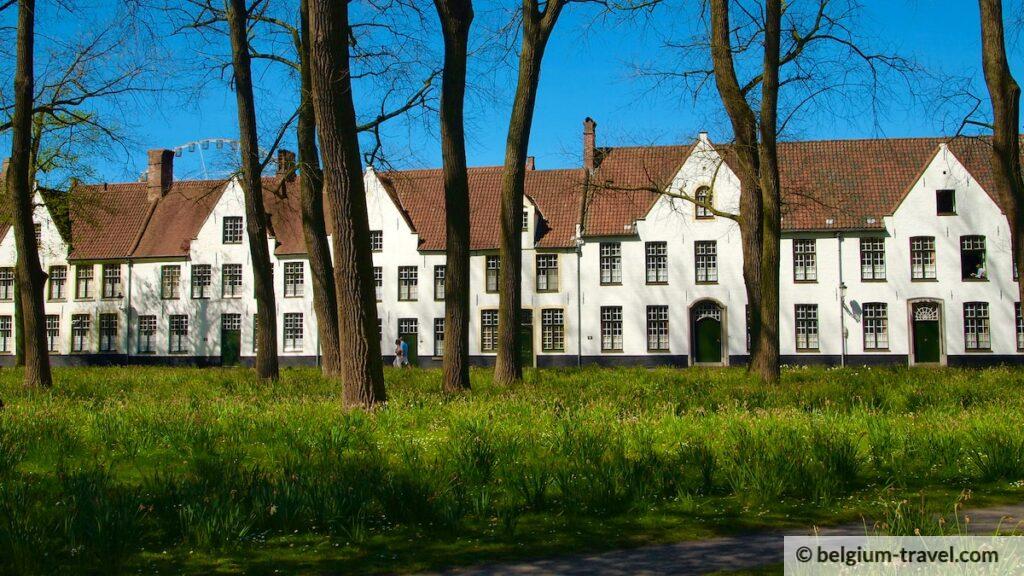
The Flemish Béguinages (or Begijnhof in Dutch) are serene and picturesque enclosed spaces, often surrounded by charming houses and gardens. These beguinages, originating in the Middle Ages, were once home to beguines – women who chose a religious life but without formal vows. The beguinages serve as a testament to a unique form of communal living and spirituality, offering a glimpse into a distinct facet of Belgium’s history.
Béguinages can be found throughout various places across Belgium, and the following are belfries located in well-known tourist destinations:
- Béguinages “Ter Wingerd” in Brussel
- Béguinages in Bruges
- Béguinages in Antwerp
- Béguinages in Leuven
Major Town Houses of the Architect Victor Horta (Brussels) (2000)

Celebrating the visionary work of architect Victor Horta, this UNESCO site showcases four townhouses in Brussels that epitomize the Art Nouveau movement. These buildings exemplify Horta’s innovative use of light, space, and decorative elements, leaving an indelible mark on architectural history.
The following houses are located in Brussels. You can visit by yourself or take a local tour with a guide.
- Hôtel Tassel
- Hôtel Solvay
- Hôtel van Eetvelde
- Hôtel Max Hallet
Plantin-Moretus House-Workshops-Museum Complex (2005)

This museum complex in Antwerp provides a window into the world of printing during the Renaissance. The site, including a 16th-century printing house, a vast library, and the living quarters of the Plantin and Moretus families, offers insights into the history of typography, book production, and early publishing.

Stoclet House (2009)
The Stoclet House in Brussels stands as an exquisite example of the Vienna Secession movement, designed by architect Josef Hoffmann. This luxurious mansion showcases a harmonious blend of art and architecture, with its intricate detailing, lavish interiors, and artistic ornamentation, making it a living testament to the avant-garde artistic expression of the early 20th century.
Major Mining Sites of Wallonia (2012)
Recognized for their historical significance and industrial heritage, the Major Mining Sites of Wallonia showcase the coal mining legacy of the Wallonia region in Belgium. This UNESCO site includes four distinct sites: Bois-du-Luc, Grand-Hornu, Bois du Cazier, and Blegny-Mine. These sites offer insights into the profound impact of coal mining on society, technology, and urban development during the Industrial Revolution. Preserved structures, machinery, and urban planning illustrate the dynamic relationship between industry and communities, shedding light on a crucial period of societal transformation.
Neolithic Flint Mines at Spiennes (Mons) (2000)
Providing a glimpse into prehistoric human ingenuity, the Neolithic flint mines at Spiennes reveal the mastery of mining techniques from over 4,000 years ago. The site, comprising extensive underground galleries, sheds light on the advanced skills and tools used by early societies to extract flint for various purposes.
Notre-Dame Cathedral in Tournai (2000)
The Cathedral of Our Lady in Tournai is an architectural masterpiece that fuses Romanesque and Gothic styles, bearing witness to centuries of construction and artistic evolution. Its five towers and intricate façade stand as testament to the skill and dedication of the artisans who contributed to its creation.
The Architectural Work of Le Corbusier, an Outstanding Contribution to the Modern Movement (2016)
This UNESCO site celebrates the groundbreaking architectural contributions of Le Corbusier, a pioneer of modern architecture. The ensemble consists of 17 sites in seven countries, including the Maison Guiette in Antwerp, Belgium. Le Corbusier’s innovative designs, characterized by functionalism and minimalism, greatly influenced the evolution of modern architecture.
The Four Lifts on the Canal du Centre and their Environs, La Louvière and Le Roeulx (Hainaut) (1998)
The four hydraulic boat lifts on the Canal du Centre, constructed during the late 19th and early 20th centuries, are exceptional feats of engineering. These lifts allow boats to traverse significant changes in water levels, showcasing the innovative solutions that enabled efficient transportation during the Industrial Revolution.
Colonies of Benevolence (2021)
The Colonies of Benevolence UNESCO site recognizes a social experiment from the early 19th century. Located in the Netherlands and Belgium, including Wortel and Merksplas in Belgium, these colonies aimed to provide humane living conditions for the urban poor, combining agricultural labor with support for vulnerable individuals. This unique endeavor reflects efforts to alleviate social issues through innovative approaches.
The Great Spa Towns of Europe (2021)
This UNESCO designation encompasses a network of spa towns across several European countries, including Spa in Belgium. These towns played a crucial role in the development of European spa culture, attracting visitors seeking health and relaxation through mineral-rich waters. The Great Spa Towns showcase the intertwining of architecture, urban planning, and wellness practices that shaped the cultural landscape of these destinations.


